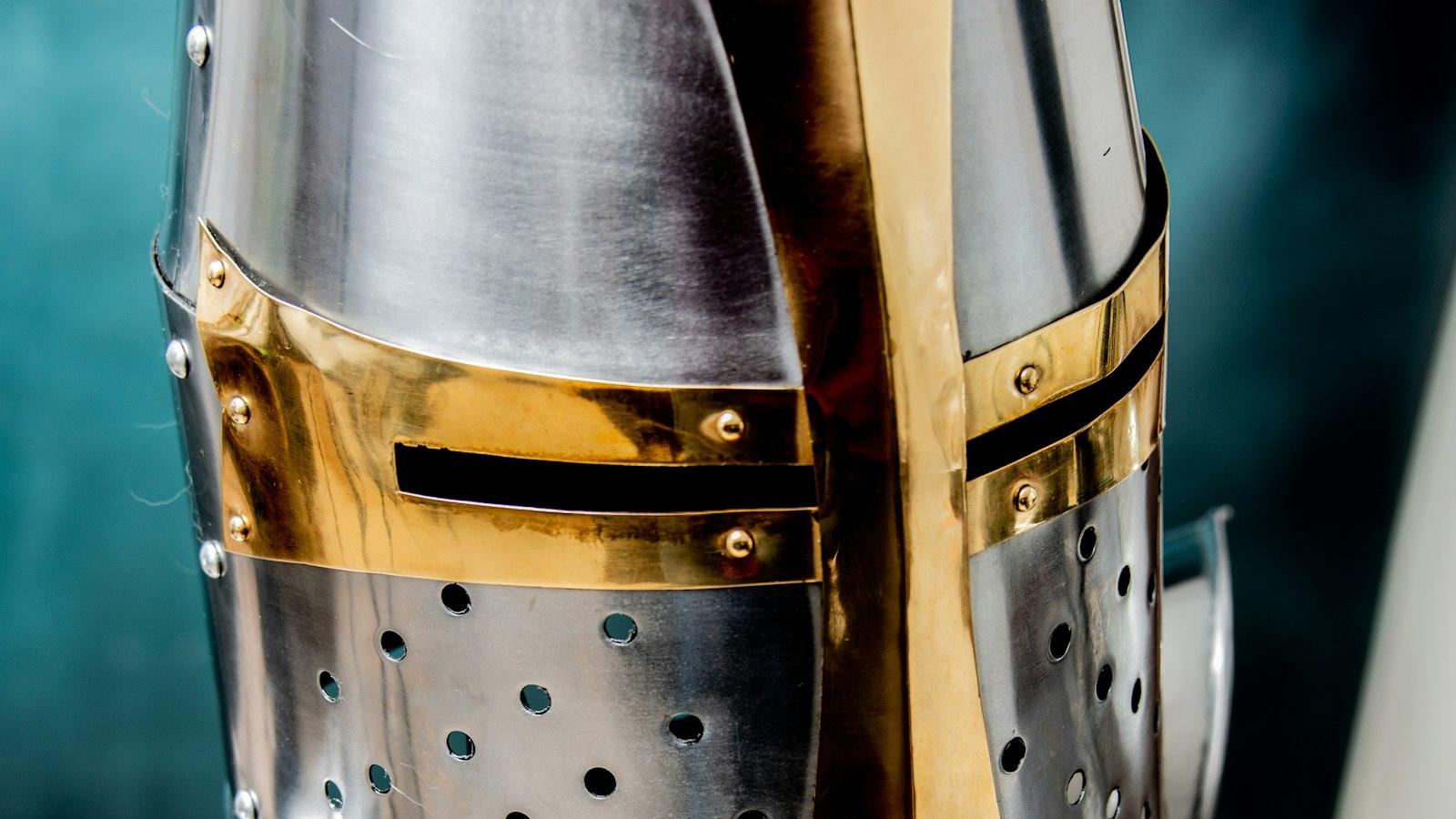
Iron sights are an essential component of firearms and mastering their usage is crucial for anyone looking to improve their accuracy and marksmanship. Whether you’re a seasoned shooter or a beginner just getting started, understanding how to properly use iron sights is a fundamental skill. In this informative article, we will delve into the intricacies of iron sights, discussing their components, proper alignment techniques, and tips for achieving precise and consistent aim. By the time you finish reading, you’ll have a clear understanding of how to effectively utilize iron sights, allowing you to confidently hit your targets with accuracy.
Understanding The Basics of Iron Sights
An iron sight is a type of firearm sight system that uses a simple arrangement of metal sights to help shooters aim accurately. Understanding how to use iron sights is essential for any shooter, whether you are a beginner or an experienced marksman. In this post, we will explore the basics of iron sights, including their components and how to effectively utilize them.
The key components of an iron sight system include a front sight post, a rear sight, and a target. The front sight post is a vertical post located towards the muzzle end of the firearm, while the rear sight is situated towards the shooter’s eye. The target, of course, is whatever you are aiming at. These three elements work together to provide a consistent and reliable aiming method.
When using iron sights, it’s crucial to focus the majority of your attention on the front sight. This is because the front sight post should be in clear focus, while the rear sight and the target remain slightly blurred. This concept is known as “sight picture” and allows for better depth perception and alignment. By aligning the front and rear sights, with the top surface of the front sight post level with the top surface of the rear sight, you can ensure proper targeting.
Another essential aspect to keep in mind when using iron sights is the concept of sight alignment. Proper sight alignment involves positioning the front and rear sights in relation to each other and the target to achieve accuracy. The rear sight’s notches or aperture should be centered within the front sight post. This symmetrical alignment ensures that your shots will be on target.
Mastering the use of iron sights requires practice, patience, and a solid understanding of the principles mentioned above. Regularly engaging in target shooting drills can help improve your proficiency. Remember, iron sights are a fundamental sighting system that can be relied upon even in low light conditions or when optics fail. So, take the time to become proficient with iron sights, and you will have a valuable skill that will enhance your shooting abilities.

Proper Alignment: A Key to Accurate Shooting with Iron Sights
Mastering the use of iron sights is essential for any shooter looking to achieve accuracy and precision. While modern optics have certainly gained popularity, iron sights remain a reliable option, especially in close-quarters or tactical scenarios. To fully harness the potential of these sights, understanding proper alignment is crucial.
1. Front Sight Focus: When aiming with iron sights, it’s important to shift your focus onto the front sight post. This allows for precise alignment with the target. By maintaining a clear, crisp image of the front sight, you ensure that your aim remains accurate.
2. Aligning the Sight Picture: Achieving proper sight alignment involves positioning the front and rear sights in a straight line, with equal spacing on both sides of the front sight. The top of the front sight post should be level with the top of the rear sight, creating a consistent sight picture. This alignment allows for precise and repeatable shots.
3. Sight Picture Consistency: Consistency is key in marksmanship. To ensure repeatable accuracy with iron sights, it’s important to maintain consistent sight picture alignment. This involves proper body positioning, a stable shooting platform, and a repeatable grip. Practicing these fundamentals will help develop muscle memory and improve your shooting skills.
| Front Sight | Rear Sight | |
|---|---|---|
| Material | Steel | Steel |
| Width | 0.12 inches | 0.15 inches |
| Height | 0.09 inches | 0.21 inches |
4. Sight Adjustment: Iron sights may require adjustment to compensate for variations in shooting distances. Most modern iron sights have elevation and windage adjustments to fine-tune your aim. Understanding these adjustments and practicing proper zeroing techniques will ensure your sights are dialed in for optimal accuracy at different distances.
5. Sight Picture Corrections: Sometimes, slight deviations in sight alignment can occur. To correct this while maintaining accuracy, identify any misalignments and make necessary adjustments. Small adjustments to both your front sight and rear sight can bring your aim back into precise alignment. Consistently monitoring and making these corrections will help you maintain accuracy throughout your shooting session.

Adjusting Iron Sights: Fine-Tuning Your Aim
To become a precise shooter, it’s crucial to understand how to properly use iron sights. These traditional sighting systems consist of a front sight and a rear sight, designed to align with your target for accurate shooting. Adjusting your iron sights allows you to fine-tune your aim, compensating for factors like wind, distance, and individual shooting style. In this post, we’ll explore the step-by-step process of using iron sights effectively.
Understanding the Components: Before you start making adjustments, familiarize yourself with the different parts of your iron sights. The front sight is located at the tip of your firearm’s barrel, while the rear sight is positioned closer to your eye, typically towards the back of the gun. Some rear sights may have elevation and windage adjustments, which enable more precise aiming. Take a moment to study your specific sight configuration.
Aligning Your Sights: Begin by aligning the front and rear sights properly. When aiming, the top of the front sight should be level with the top of the rear sight. Additionally, your target should be centered between the two sights. This alignment ensures that your firearm is pointing in the right direction and increases the chances of hitting your mark. Practice aligning your sights against a fixed object to build muscle memory.
Zeroing In: “Zeroing in” your iron sights means adjusting them so that your point of aim matches your point of impact at a specific distance. To achieve this, select a target at your desired distance, such as 25 yards. You’ll need a safe shooting range for this step. Start by aiming at the center of the target and firing a few shots. Examine where the bullets hit the target and adjust your sights accordingly.
Elevation Adjustment: Elevation refers to the vertical alignment of your sights. Most rear sights offer elevation adjustments, allowing you to compensate for variations in target distance. If your shots consistently hit low, you’ll need to raise the rear sight. Conversely, if your shots land high, lower the rear sight. Make small adjustments and retest until your bullets hit the target at your desired point of aim.
Windage Adjustment: Windage refers to the horizontal alignment of your sights. This adjustment compensates for wind drift, ensuring that your shots accurately hit the intended target. If your shots veer to the right or left of your target, use the windage adjustment on your rear sight. Gradually tweak the sight until bullets land precisely where you aim. Remember to practice shooting in different wind conditions to hone your skills.
Using iron sights effectively requires practice and patience. Regular range sessions allow you to become familiar with your firearm’s specific sight configuration and make the necessary adjustments for optimal accuracy. By understanding the components, aligning the sights, zeroing in, and adjusting elevation and windage, you’ll be on your way to becoming a skilled shooter who consistently hits their mark.
Overcoming Common Challenges When Using Iron Sights
Iron sights are an essential component of many firearms, providing you with a reliable and traditional method of aiming. However, they can also present some challenges that can hinder your accuracy if not addressed. In this post, we will explore some common obstacles that shooters face when using iron sights and provide helpful tips for overcoming them.
1. Poor Sight Alignment: One of the primary challenges when using iron sights is ensuring proper sight alignment. This refers to the correct positioning of the front and rear sights in relation to each other and the target. To improve your sight alignment, follow these steps:
- Ensure the top edges of both the front and rear sights are even and aligned horizontally.
- Center the front sight post within the rear sight aperture.
- Focus on the front sight while maintaining a clear sight picture of the target.
2. Inconsistent Sight Picture: Achieving a consistent sight picture is crucial for accuracy. However, it can be challenging due to factors such as lighting conditions, target distance, and shooter error. Here are some ways to overcome this challenge:
- Practice regularly in various lighting conditions to become accustomed to different sight pictures.
- Experiment with different sight picture techniques, such as the 6 o’clock hold or center-mass hold, to find what works best for you.
- Familiarize yourself with the specific sight radius of your firearm, as it can affect your sight picture at different distances.
3. Sight Focus Issues: Another common challenge when using iron sights is focusing on the wrong element, often leading to inaccurate shots. To address this, consider the following:
- Front sight focus: Maintain a clear focus on the front sight while keeping the target slightly blurred in your peripheral vision. This helps ensure proper alignment and accurate shots.
- Target focus: In certain scenarios, focusing on the target rather than the sights may improve situational awareness. However, this technique should be used cautiously, as it may lead to less precise shots.
4. Windage and Elevation Adjustments: Some iron sights allow for windage and elevation adjustments to compensate for shot deviations. If you’re struggling with accuracy, it could be due to improper adjustments. Consider the following tips:
| Issue | Solution |
|---|---|
| Shot grouping to the left or right (windage) | Adjust the rear sight left or right in small increments to correct the point of impact. |
| Shot grouping too high or low (elevation) | Adjust the front sight post up or down to raise or lower the point of impact. |
5. Recoil Management: Recoil can affect your accuracy, especially when using iron sights. Overcoming this challenge requires proper technique and control. Here’s how:
- Stance: Adopt a firm and stable shooting stance to better manage recoil.
- Grip: Ensure a firm grip on the firearm, focusing on maintaining control during the recoil cycle.
- Follow-through: Maintain your sight picture and proper alignment during and after the shot to recover quickly and prepare for follow-up shots.
By understanding and addressing these common challenges when using iron sights, you can improve your shooting skills and achieve greater accuracy. Remember, practice is key. Regularly honing your skills and familiarizing yourself with your specific firearm and sight system will lead to better results and greater confidence in your shooting abilities.

Mastering Your Shooting Technique with Iron Sights
Adjusting Your Iron Sight
One of the most important aspects of is ensuring that your sight is properly adjusted. This will help you achieve accuracy and consistency in your shots. To begin, you need to first determine your dominant eye. Close one eye and focus on a distant object. Open your closed eye and close the other one instead. Whichever eye still has the focused view of the object is your dominant eye.
Once you have identified your dominant eye, you can begin adjusting the iron sight. Start by aligning the front and rear sights horizontally, ensuring that they are perfectly centered. Next, adjust the rear sight vertically to align it with the front sight. This adjustment may vary depending on the distance of your target. Remember to make small adjustments and test your accuracy after each change.
Proper Shooting Stance
Having a solid shooting stance is crucial for accuracy and stability. Start by standing with your feet shoulder-width apart for better balance. Your body should be relaxed yet firm, with your weight evenly distributed between your feet. Avoid leaning forward or backward as this may affect your aim. Position the firearm close to your body, aligning it with your dominant eye. This will give you better control and reduce recoil, allowing you to maintain a steady aim.
Focus on Trigger Control
Mastering trigger control is essential when using iron sights. To achieve accuracy, you need to develop a smooth and controlled trigger pull. Avoid jerking or flinching when squeezing the trigger, as this can throw off your aim. Instead, concentrate on applying steady pressure with the pad of your index finger. Focus on the front sight while slowly and steadily squeezing the trigger. This will help you maintain alignment and improve your shooting accuracy.
Consistent Breathing Techniques
Another factor to consider in is controlling your breathing. Proper breathing techniques can aid in reducing body movement and increasing focus. Before taking your shot, take a deep breath and then exhale halfway. Hold your breath momentarily while you aim and squeeze the trigger. This momentary pause in your breath will help minimize any movement caused by breathing and allow for a more stable shot.
Practice, Practice, Practice
Lastly, the key to mastering any shooting technique, including using iron sights, is practice. Regular and purposeful practice will help you refine your skills and improve your accuracy. Make sure to set aside dedicated time for shooting practice, focusing on the techniques mentioned above. Start with short distances and gradually increase the difficulty as your skills progress. Remember, practice makes perfect!
Q&A
Q: What is an iron sight?
A: An iron sight is a type of firearm sight consisting of two components: a rear sight and a front sight. It is a traditional aiming mechanism found on most firearms, particularly rifles and handguns.
Q: How does an iron sight work?
A: Iron sights align the shooter’s eye with the target by visually lining up the front and rear sights. The rear sight has a groove or notch, while the front sight is usually a post or bead. By aligning these sights, the shooter can aim accurately at the target.
Q: What are the advantages of using iron sights?
A: Iron sights are simple and reliable aiming devices that come as standard equipment on most firearms. They require no batteries, are not affected by weather conditions, and can be used in various lighting conditions. Additionally, iron sights can enhance the shooter’s understanding of aiming fundamentals.
Q: How do I properly aim with iron sights?
A: To aim accurately with iron sights, start by aligning the front sight in the center of the rear sight’s notch. Once aligned, adjust the sights until the top of the front sight is level with the top of the rear sight. Finally, focus on the front sight while keeping the target and rear sight slightly blurred.
Q: How can I improve my shooting accuracy with iron sights?
A: Practicing the fundamentals of shooting is key to improving accuracy with iron sights. This includes maintaining a stable grip on the firearm, ensuring proper sight alignment, and practicing trigger control. Regular training sessions and seeking guidance from experienced shooters can also greatly enhance your accuracy.
Q: Can iron sights be adjusted?
A: Yes, most iron sights can be adjusted for windage (horizontal alignment) and elevation (vertical alignment). Many firearms have adjustable rear sights that can be moved using a screwdriver or specialized tool. However, some firearms may have fixed iron sights that cannot be adjusted.
Q: Are there any additional accessories that can be used with iron sights?
A: Yes, some shooters may opt to enhance their iron sight shooting experience by adding accessories like sight magnifiers or fiber optic inserts. These accessories can help improve visibility and target acquisition, but they are not essential for using iron sights effectively.
Q: How do iron sights differ from other sighting systems, such as scopes or red dot sights?
A: Iron sights are considered a more traditional sighting system compared to scopes or red dot sights. Unlike scopes, iron sights have no magnification capabilities. Red dot sights, on the other hand, use an illuminated reticle to project a red dot onto a lens, allowing for quicker target acquisition.
Q: Can iron sights be used alongside other sighting systems?
A: While it is generally not possible to use traditional iron sights and scopes or red dot sights simultaneously, some firearms come with backup iron sights (BUIS). These are supplementary iron sights that can be flipped up when necessary, providing an alternative aiming solution in case the primary optic fails.
Q: Do I need any special training to use iron sights?
A: While using iron sights is relatively straightforward, it is recommended that beginners seek proper training and guidance from experienced shooters. Familiarizing yourself with safety rules, understanding the fundamentals of shooting, and practicing regularly can greatly improve your accuracy and overall shooting skills. In conclusion, mastering the use of iron sights is a fundamental skill for any shooter, whether you’re a seasoned marksman or just starting out in the world of firearms. Understanding the components, adjusting for windage and elevation, and maintaining proper sight alignment are all critical factors in achieving accuracy and precision with iron sights.
By following the step-by-step guidelines outlined in this article, you can start honing your iron sight shooting skills and build a solid foundation for your shooting journey. Remember to practice regularly and remain patient, as mastering the art of sight picture and trigger control takes time and effort.
Keep in mind that while iron sights may seem old-fashioned in the era of advanced optical sights, they offer a reliable and simplistic method for aiming in various shooting scenarios. Embracing the use of iron sights will not only enhance your shooting capabilities but also give you a deeper understanding of the mechanics behind firearm operation.
Whether you’re hitting the range for recreational shooting or preparing for self-defense situations, being proficient in iron sight usage is immensely valuable. So, dedicate the necessary time to familiarize yourself with this essential skill and continue to refine your technique. As with any aspect of shooting, continuous training and the pursuit of knowledge will lead to continuous improvement in your marksmanship abilities.
In summary, learning how to use iron sights effectively is an indispensable skill for any shooter. By understanding the principles and techniques discussed in this article, you are well-equipped to harness the power and precision of iron sights. Happy shooting!






